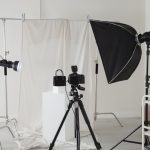A Beginner’s Guide to Reflective Product Photography
Taking pictures of products that have shiny reflective surfaces can be daunting. The reflection of the light or the camera set up on the product surface can spoil the photo. You cannot use such pictures on your website or any other ecommerce platform like Amazon. Such images are neither good aesthetically nor are they attractive to the customers. Reflections can be hard to tame, but there is a solution that you can try; opt for reflective product photography.
Reflective Product Photography Objectives
When starting with reflective product photography, you need to determine your goals, which are:
- The primary aim is to control the reflections to ensure zero impression of the camera or the photographer on the surface.
- The use of lighting with soft shadows is good for taking pictures of shiny things. It enhances the look of the product making it appealing to the customers.
- Products with hard edges and logos should have crisp images where the brand logos are visible.
- Customers often complain that the color they saw on the website and the actual color after receiving the product did not match. Accuracy in the color rendering of the products can prevent such instances.

Lighting Techniques that Make the Job Easy
Lighting techniques vary with the type of product and photography. The lighting used for pictures of shiny products will not be the same as lifestyle product photography.
Here are a few lighting techniques to try for the reflective products:
- Box backlighting: This works best for products made of glass. The technique leverages the translucent effect of the glass, creating a clear image while defining the product’s attributes. In backlighting, you place the product in a softbox and put the light at the back. The brightness of the light enhances the features of the products as the light shines through them. You can use continuous and strobe lighting, but use a diffuser.
- Side lighting: Side lighting works well for products like sunglasses, spectacles, and watches. The position of the light should be on the left side of the product, along with the use of an umbrella to create a diffused look. This kind of lighting defines the intricacies of the product, enhancing every curve and detail in the image. In some cases, 45-degree side lighting can illuminate the piece and prevent glares.
Do You Need a Pro?
Photography of reflective products can be challenging as there are a million things that can go wrong while taking a picture. A DIY will not only be difficult but time-consuming as well. To save time, and resources, and to ensure quality images of your shiny products it is wise to rely on the expertise of professional product photographers who have adequate experience. You can get affordable product photography pricing as well, so make sure your partner with a reputable reflective product photographer.
FAQ
What are the different types of equipment you need for studio set-up in reflective product photography?
- Softboxes
- Stands
- Tripod
- Lighting
- Umbrella as diffuser
What is lifestyle product photography?
In lifestyle product photography, the picture of the product is taken in a styled and curated set-up, sometimes with models, enhancing the aesthetics.







